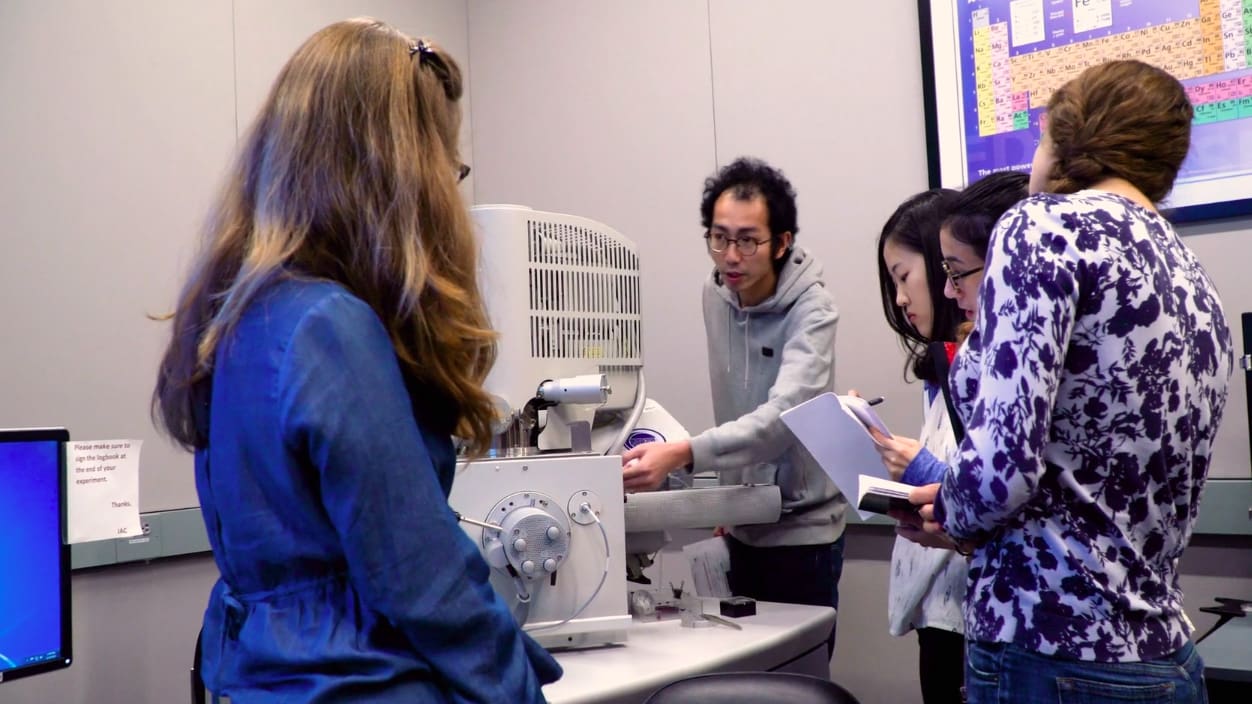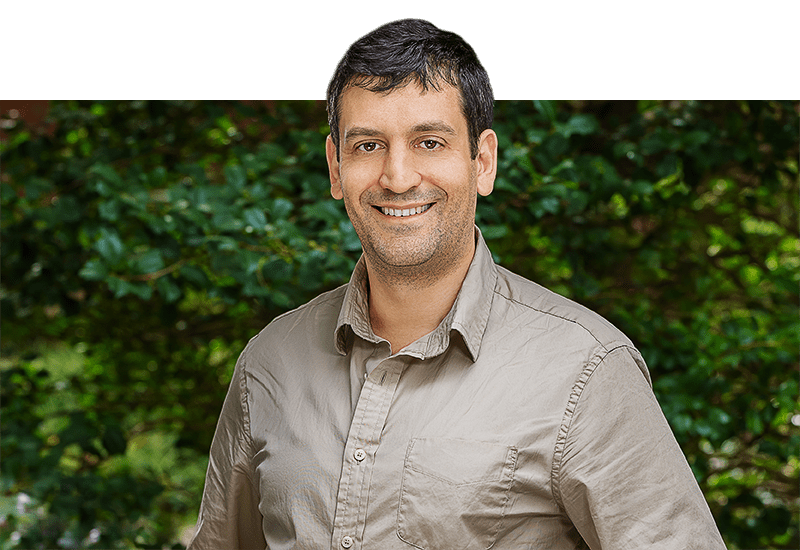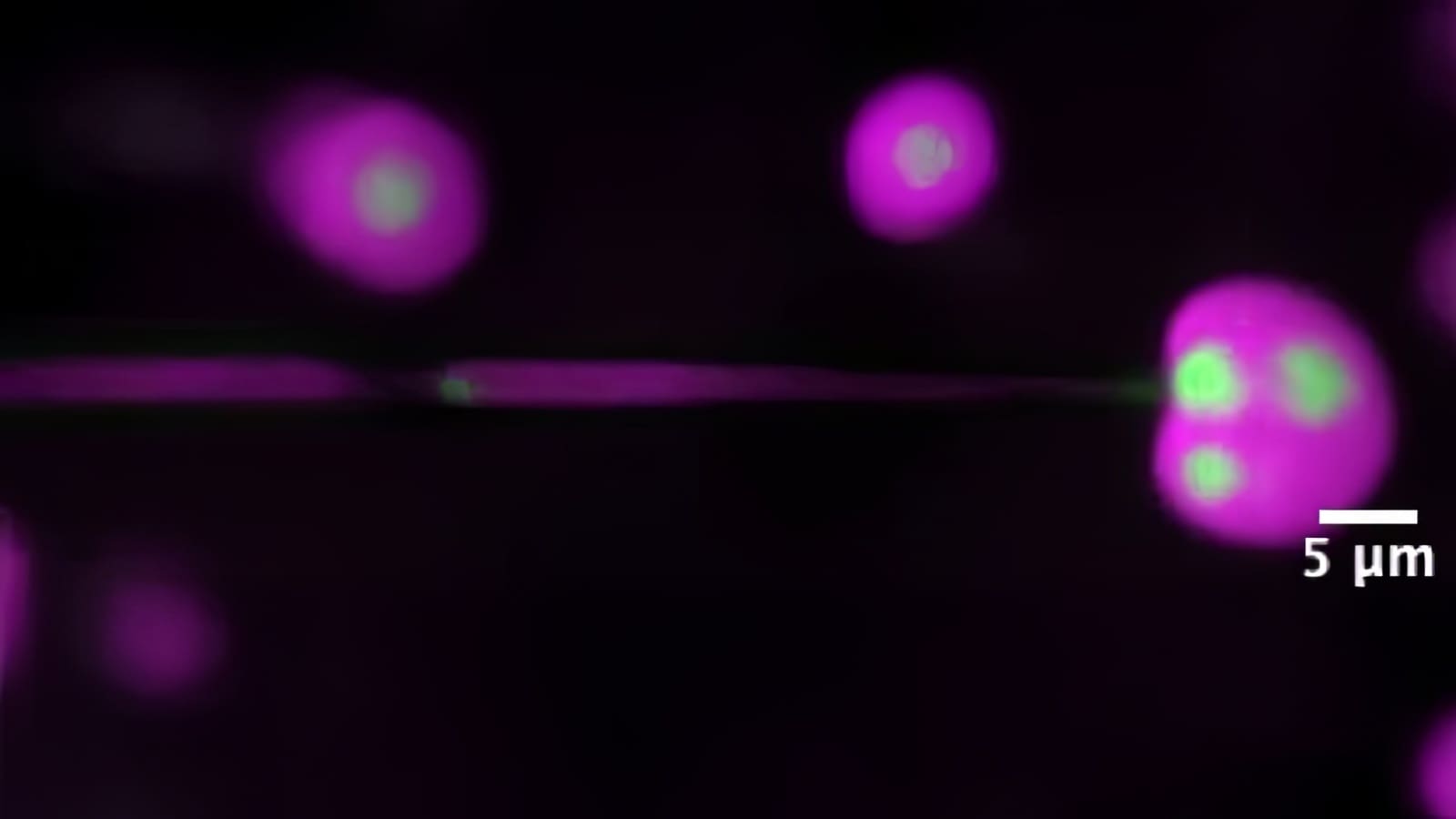
Tiny particles, big machines
By
on
Students in the course “Laboratory Techniques in Materials Science and Engineering” (MSE 302) are learning how to use large and sophisticated pieces of equipment to probe materials that are several times smaller than the width of a human hair.
The instruments are part of Princeton’s Imaging and Analysis Center, which is part of the Princeton Institute for the Science and Technology of Materials (PRISM). The facility is located in the basement of the Andlinger Center for Energy and the Environment where the equipment is insulated from vibrations from traffic and other disturbances. Several of these instruments are the latest and most sophisticated versions the field has to offer.
“The students are learning theory behind materials science characterization techniques as well as gaining hands-on practical experience on how to utilize these techniques,” said Rodney Priestley, associate professor of chemical and biological engineering and one of three instructors for the course, which is administered by PRISM.
Two techniques the students are learning are transmission electron microscopy and scanning electron microscopy. Both involve using beams of electrons to probe the structure of a material.
Grace Kresge, Class of 2019, is a junior studying chemical and biological engineering who took the course this fall. One of the projects involved scanning electron microscopy images of a morpho butterfly wing, which gets its beautiful blue color not from pigments but from how light interacts with its physical structure.
“It is really exciting to work with the state-of-the-art equipment,” said Kresge, who plans to go to graduate school for chemical engineering focused on materials science.
“This course is going to prepare me – it is already preparing me – for graduate-level characterization work,” she said. The techniques are “things that I have seen ‚Ķ graduate students in the past do. I know that this is getting me on track to be a competitive candidate to go to graduate school.”
This story and video are part of a larger series on courses, usually taken during student’s junior year, which enable them to conduct independent research or creative work for their senior thesis, a months-long research project required for most students as a capstone to their Princeton experience. To see the entire series, click here.







